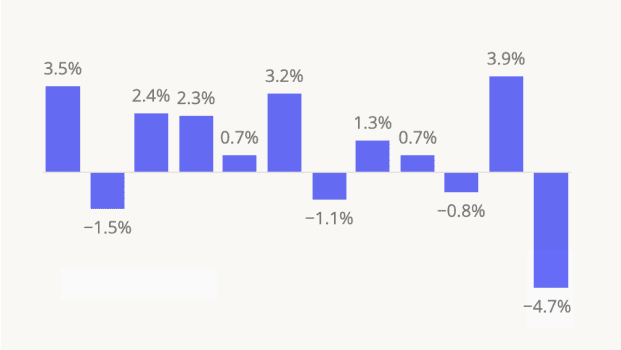In December 2024, Saks Fifth Avenue finalized its acquisition of Neiman Marcus – forming a new parent company Saks Global. We dove into the foot traffic patterns and audience segmentation for the two department stores in order to better understand Saks Global’s positioning following the deal.
Becoming a Bigger Player
Nordstrom, Bloomingdale’s, Saks Fifth Avenue, and Neiman Marcus are four of the leading players in the luxury department store space. Analysis of the retailers’ relative visits share in 2024 reveals that Nordstrom claims the lion's share of combined visits between the four department stores (68.4% in 2024), distantly followed by Bloomingdale’s (14.9%). On their own, Saks (7.3%) and Neiman (9.5%) drive the smallest shares of visits, but together, the two department stores account for a greater share of visits than Bloomingdale’s, making Saks Global the second largest luxury department store player by share of visits.
Accessing “Accessible Luxury”
In addition to a larger share of visits, by acquiring Neiman Marcus, Saks appears to gain an audience with a greater affinity for “accessible luxury”. Although a sizeable share of Saks’ visitors also visited a Nordstrom store (40.4%), an even larger share (just over half, or 50.1%) of Neiman’s visitors also visited the accessible luxury department stores. Some have posited that Saks Fifth Avenue could be positioned as an “accessible luxury brand”. However, the data suggests that Neiman may be better suited to compete for visits from “accessible luxury” shoppers.
Critical Share of Visits
Diving deeper into the retailers’ quarterly visit patterns further highlights how Saks stands to gain through its acquisition of Neiman. Of the four luxury department stores analyzed, Saks Fifth Avenue received the smallest share of its visits in Q4, while Neiman received the largest share of its visits over the holiday shopping season. So by acquiring Neiman, Saks Global benefits from a greater share of visits during a critical retail moment.
A More Affluent Audience
Along with visit share gains and a larger holiday boost, the acquisition of Neiman Marcus gives Saks Global access to a more affluent audience than Saks Fifth Avenue’s. Analysis of Saks Fifth Avenue and Neiman Marcus’s trade areas combined with STI:PopStats data reveals that both retailers drive traffic from households with above-average incomes – but Neiman’s audience seems to be slightly more affluent: In Q4 2024, the median household income (HHI) of Neiman’s captured market was $112.8K/year, approximately $10K/year higher than Saks Fifth Avenue’s ($102.9K/year). A more affluent audience may better position Saks Global in the exclusive luxury space, particularly as it launches Authentic Luxury Group – a platform that aims to accelerate the growth of upscale brands like Barneys New York.
More Families in the Fold
Further analysis of segmentation data reveals that Neiman Marcus also brings a more family-oriented audience to the Saks ecosystem. In Q4 2024, 26.2% of households in Neiman Marcus’ captured market were households with children – relatively near the 27.0% nationwide benchmark. Meanwhile, only 23.7% of households in Saks Fifth Avenue’s captured market were households with children. This suggests that the acquisition of Neiman allows Saks Global to drive more traffic from family-oriented households previously underserved by the Saks Fifth Avenue banner. Several Saks and Neiman locations are in close proximity to each other, so it’s conceivable that Saks Global will consolidate its real estate footprint in the future. If so, understanding audience segmentation could help the new parent company decide which retailer best serves the local market.
Merging It All
Saks Fifth Avenue’s acquisition of Neiman Marcus strengthens Saks Global’s position in luxury retail, boosting its visits share and access to a more affluent, family-oriented audience.How will the merger impact the luxury department store space moving forward? Visit Placer.ai to find out.




.png)
.png)

.png)
.png)














.svg)